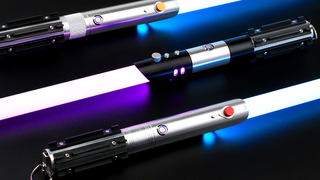
The smartphones that we carry around with us everywhere are fantastic little devices, capable of entertaining and informing and communicating with the rest of the world—but they can be incredibly distracting too. If you’ve decided that your phone is sucking up too much of your time and attention, there are numerous ways to make it less distracting.
This is sometimes referred to as phone minimalism, and it can cover everything from turning off a few notifications to actually buying a brand new handset that’s been built with minimalism in mind. Make your choice accordingly, depending on how simplified you want your smartphone experience to be.
Delete some apps

It’s not really smartphones that are distracting—it’s all the apps that we load up on them. If you want to embrace mobile minimalism, get rid of as many apps as you can, and maybe even all of them. To uninstall an app from the Android app drawer, press and hold on its icon and drag it up to the Uninstall buttons; on an iPhone home screen, press and hold on an app icon and choose Remove App.
If you need some help figuring out which apps you waste most of your time in, your phone can help here. On Android, open up Settings and then choose Digital Wellbeing and parental controls to see how much time you’ve spent in each of your apps lately. On iOS, from Settings pick Screen Time. These same screens give you options for putting limits on app use, which is another way of becoming a more minimal phone user.
G/O Media may get a commission

*lightsaber hum*
SabersPro
For the Star Wars fan with everything.
These lightsabers powered by Neopixels, LED strips that run inside the blade shape that allow for adjustable colors, interactive sounds, and changing animation effects when dueling.
You don’t necessarily have to delete the accounts associated with these apps, though that’s an option as well. Remember that even if you uninstall apps such as Twitter and Instagram from your phone, you can still get at them on the web (and people can still contact you through them)—it’s just that you won’t be constantly tempted to open them up on your phone.
Properly manage your notifications

Maybe you want to keep certain apps on your phone for whatever reason, but you wish they wouldn’t interrupt your day quite so much. Both Android and iOS now have plenty of notification options you can tweak: Head to Notifications and App settings from Android Settings or Notifications from iOS Settings to make changes and silence some (or all) of the apps on your phone.
Your phone can also silence itself for certain periods of time. On Android, open up Settings and then choose Sound and vibration and Do Not Disturb: This mode can be enabled manually or on a timer, and it’s up to you which apps (if any) are allowed to display notifications and prompt buzzes and sounds. You can also specify certain contacts who will still be able to reach you when Do Not Disturb is enabled.
Over on iOS, open Settings and then tap Focus: You can set up particular rules for different scenarios (like being in the office or driving between places), and there’s a standard Do Not Disturb option as well. To help limit distractions, you can set specific lock screen and home screen combinations, and as on Android, you’re able to select apps and contacts that the customized rules don’t apply to.
Make your phone less appealing

Aesthetics are a big part of minimalism, and you can quickly reduce the visual appeal of your phone with a more austere color scheme and a simpler wallpaper (see the options under Display and Wallpaper and style in Android Settings and Display & Brightness and Wallpaper in iOS Settings).
Pixel phones have a special bedtime mode that dims the screen and switches to a grayscale mode: From Settings, choose Digital Wellbeing and parental controlsthen Bedtime mode to turn it on manually or set it to work on a schedule. iOS doesn’t offer anything to match this feature, but you can put your iPhone in a grayscale mode—from Settings, tap on Accessibilitythen Display & Text Sizethen Color Filters.
Another option for Android phones is Minimalist Phone: It’s a launcher app that applies a basic, monochrome, text-based interface, as well as offering extra tools for managing the time you spend inside apps and suppressing notifications when you don’t want to be disturbed. It’s an interesting approach and you can easily switch back to your phone’s normal mode of operation when needed.
Buy a minimalist phone

You do have another option here, which is to buy a phone that’s been designed to be minimal. A number of features phones are available from Nokia, for example, from as little as $50. You can make calls and send texts, but there’s no Instagram or Snapchat to distract you from the real world (Google Maps is installed on these handsets, so you’re still able to get from A to B).
Then there’s the Light Phone II, a $300 phone built to be as lightweight as possible (which might have inspired the name). There’s an electronic paper screen, just the basics in terms of functionality (a calculator is about as advanced as it gets), and the interface is just lines of text and a few carefully chosen icons. Switching to something like this could seriously cut down on your phone use.
Something similar is offered by the Wisephone, which will set you back $400. It’s a bit more advanced than the Light Phone II—it can take photos, for example, and there’s a basic maps app included—but again there’s a monochrome interface that mostly just uses text, and hardly anything in the way of apps. You’re not going to spend hours of your life scrolling through social media on the Wisephone.
.